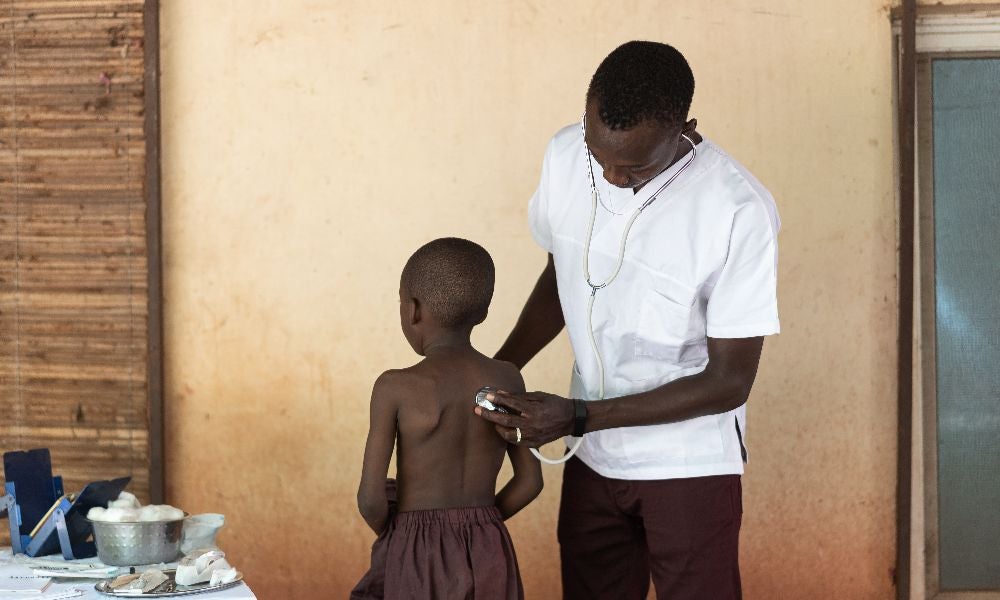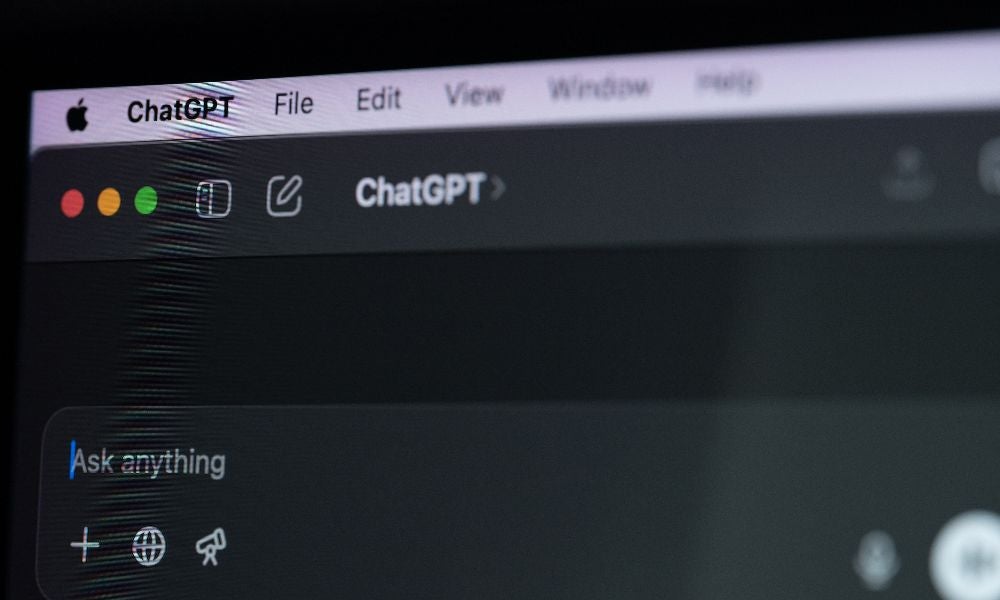How technology is bridging the global healthcare divide
Download The Business Of podcast on your favourite podcast platform.
Digital health tools and task-shifting models are reshaping and improving healthcare delivery amid severe service gaps in regions such as sub-Saharan Africa
Sub-Saharan Africa is experiencing one of the most profound healthcare crises in the world – a confluence of workforce shortages, limited infrastructure, and inequitable access to essential services. The World Health Organization reports that the region carries 24% of the global disease burden but only 3% of the global health workforce, with just 1.3 health workers per 1000 people – well below the WHO’s recommended minimum of 4.5 per 1000 needed to deliver basic care. Rural areas, where more than 60% of the population resides, remain chronically underserved due to skill shortages and underfunded local systems.
Financial barriers further compound the crisis: over 40% of healthcare financing in sub-Saharan Africa comes directly from out-of-pocket payments, pushing millions into extreme poverty each year when medical help is needed. At the same time, 70% of global maternal deaths in 2023 occurred in this region, illustrating how limited medical access directly translates into preventable mortality.
Despite this, digital innovations such as telemedicine and AI-powered clinical decision tools are reshaping what access to care looks like – transforming mobile phones into lifelines and empowering community health workers to bridge critical gaps. As traditional strategies falter under demographic pressure and workforce migration, the rise of new medical technology (MedTech) points to an emerging new paradigm: task sharing through digital augmentation. In this context, technology doesn’t replace physicians – it extends their reach, offering a rare chance to redefine equitable care delivery across a continent long excluded from quality healthcare.

Dr Jackie Rabec (AGSM MBA 2020) recognised that solving this crisis required abandoning conventional thinking about healthcare delivery. After practising medicine in South Africa and working at Google, she co-founded ThinkMD to encode medical expertise into software that frontline health workers could use anywhere, anytime, with or without internet connectivity. "So what we're doing with ThinkMD is saying, 'How can we use machine learning capabilities and software to enhance the clinical capability of frontline healthcare workers who are not doctors?' ThinkMD levels up their thinking and reasoning, essentially," said Dr Rabec.
The technology doesn't replace doctors; rather, it multiplies their impact across thousands of health workers who already serve these communities, explained Dr Rabec, who was recently interviewed by Dr Juliet Bourke, Adjunct Professor in the School of Management and Governance at UNSW Business School for The Business Of, a podcast from UNSW Business School.
The scale of healthcare inequality
The mathematics of global healthcare tell a story of profound disparity. In many African nations, the low doctor-to-patient ratio creates a healthcare desert where traditional medical infrastructure cannot take root. "We have some touch points in Southeast Asia, but predominantly focused in Africa, where the doctor-to-patient ratio is about one to 10,000, so that's one doctor to 10,000 patients," said Dr Rabec.
"So we see that there is a massive shortage in the clinical workforce, and ministries of health have tried to address this by training more doctors, but inherently, what happens is, once they've trained, they'll end up leaving the country," she said. The brain drain phenomenon meant that investments in medical education often benefited wealthier nations rather than the communities that desperately needed healthcare providers.
Learn more: The resilient entrepreneur: How this Aussie medtech start-up went global
This reality has forced healthcare providers and associated organisations to rethink their approach entirely. Rather than focusing solely on producing more doctors, they began exploring how technology could enhance the capabilities of existing healthcare workers. The concept of task-shifting emerged, where responsibilities traditionally reserved for doctors could be supported through technological tools that guide clinical reasoning and decision-making.
MedTech solutions reshape clinical practice
Dr Rabec's ThinkMD is a technology solution that operates as a clinical decision support system and is designed to run on any device, online or offline. The application enables frontline healthcare workers in rural and remote communities to perform at the top of their scope of practice. A community health worker without a medical degree, for example, can assess patients, develop differential diagnoses, and deliver appropriate treatments guided by machine learning algorithms that encode medical expertise.
The platform addresses the core pain point of increasing capacity in under-resourced healthcare settings where traditional medical infrastructure remains absent. ThinkMD transforms the smartphone – a device increasingly common even in remote areas – into a gateway for quality healthcare delivery, Dr Rabec explained.

The technology roadmap extends beyond basic diagnostic support. She said future iterations of ThinkMD will incorporate biometric data collection, audio analysis for conditions like tuberculosis, and image pattern recognition. These capabilities would allow a single healthcare worker to access multiple diagnostic tools through their mobile device, dramatically expanding their ability to identify and treat various conditions. The integration of complementary technologies from other ecosystem players creates a comprehensive toolkit for primary care delivery in resource-limited settings.
Technology governance and the Hippocratic principle
The deployment of healthcare technology in vulnerable communities raises questions about responsibility and ethics. Professor Barney Tan from UNSW Business School highlighted that successful digital transformation requires more than technical innovation. Companies must embrace self-regulation that goes beyond minimum compliance standards, asking not just what they can do legally, but what they should do ethically.
"There is a need to be self-regulating, regardless of what the local laws say," Prof. Tan told Dr Bourke. "This is emblematic of what I'll call technology governance maturity. It's when a company doesn't just ask what's the minimum I need to do to comply, but instead asks what's the right thing to do for the people that we serve, that's a cultural and mindset shift, and it's not just in healthcare." This approach builds trust, ensures sustainability, and creates value for communities served.
Subscribe to BusinessThink for the latest research, analysis and insights from UNSW Business School
ThinkMD embeds this ethical framework directly into its product development process. The company maintains fixed criteria for evaluating new features, assessing whether each development would be helpful, neutral, or harmful to patients. Any potentially harmful features never proceed to development, regardless of other potential benefits. "Is this helpful, neutral or harmful to a patient? And if it's in any way harmful, we just don't do it or build it at all," Dr Rabec explained. "And so that's like an essential North Star, because at the end of the day, if you're not improving like clinical outcomes for patients, [you] should be."
This systematic approach to ethical decision-making ensures that the traditional medical principle of "do no harm" translates into technological innovation. The presence of clinical expertise within technology companies developing healthcare solutions proves essential not only for governance but also for understanding the nuanced relationships between patients, clinicians, and healthcare systems.
Bridging developed and developing markets
The applications of clinical decision support technology extend beyond resource-limited settings. Developed economies face their own healthcare challenges, including provider shortages in rural areas, increasing demand from ageing populations, and the need for more efficient care delivery. The difference lies in the implementation approach and risk tolerance, rather than meeting a fundamental and unmet need.
"If we look at a low to middle-income market, because the problems are so big, the risk posturing to enable frontline healthcare workers with tools that are obviously clinically validated (and ThinkMD has had really robust clinical validation) is somewhat lower, whereas in a developed country, because the doctor-patient ratio might be something like one to 800 patients, not only are your expectations from patients different, but the risk posturing of a ministry of health might look a bit different," Dr Rabec noted.

The contrast highlights how baseline conditions shape technology adoption. In settings where the alternative is no healthcare access at all, the acceptance of technology-assisted care comes more readily. In developed markets, where patients expect direct physician contact and regulatory frameworks remain more conservative, the same technologies face higher barriers to adoption despite potential benefits.
Citizens in advanced economies already engage with health information through various digital channels, from Google searches to ChatGPT queries. The challenge becomes ensuring that technology platforms provide vetted, trustworthy information with appropriate guardrails while remaining culturally and contextually relevant to diverse user populations. "At the end of the day, a patient or a citizen is going to engage with whatever health information is at hand for them that is helping them navigate an acute health care need," Dr Rabec explained. "And so we have to meet the user where they're at."
The promise and peril of healthcare's digital future
The pace of technological change makes predicting healthcare's future challenging. Innovation spans the entire care continuum, from prevention and health education through diagnostics, treatment, and follow-up care. Dr Rabec observed that multiple stakeholders are pursuing breakthroughs in each domain, creating an ecosystem of complementary and sometimes competing solutions. "We have so many players that are running hard at the wall for each of these paradigms," she said.
The convergence of these technologies promises improvements in healthcare delivery, but also raises concerns about equity, and Dr Rabec said the risk of creating deeper healthcare divides is a real challenge. Countries with infrastructure and resources may leverage advanced technologies for increasingly personalised and preventive care, while communities lacking basic infrastructure fall further behind. Furthermore, she observed that rural and remote settings that cannot support technology deployments may find themselves excluded from healthcare innovations that become standard elsewhere.
Learn more: In the co-pilot's seat: how AI is transforming healthcare
This concern extends to developed nations where geographic and socioeconomic factors create internal healthcare disparities. Australian citizens in Sydney, for example, enjoy different healthcare access than those in remote bush communities, despite living in the same wealthy nation. The challenge becomes ensuring that technological advancement reduces rather than amplifies existing inequalities.
The path forward requires deliberate efforts to scale proven MedTech solutions into as many hands as possible while maintaining clinical validation and outcome focus, said Dr Rabec. Success means reimagining how healthcare technology serves not just healthcare workers but also citizens directly, creating multiple pathways for quality care access regardless of geographic or economic circumstances. The question remains whether the global health community will prioritise equitable deployment of these innovations or allow technology to deepen existing divides.
